Saan
The Saan are indigenous to the river deltas, deserts and mountains of KwaZulu alongside the Khoekhoe, making their home here long before the Abantu arrived. They are known as the best hunters in Alkelbulan, to possess rare tracking and divination magic and to speak a unique click language! They don't actually call themselves Saan, a name given by their Khoekhoe neighbors, identifying themselves by the names of their individual tribes. There are many tribes and languages belonging to the Saan, all falling into a larger group called Khoi-Saan. The three main branches are Khoe, Tuu and Kx'a. While the Saan are outnumbered by the KhoeKhoe and Abantu, they are it's oldest inhabitants and in fact one of the oldest surviving cultures on all of Emynea!
Throughout their long history, the Saan have never once domesticated any plant or animal, relying entirely on foraging and hunting. They are known throughout Alkelbulan as the greatest hunters and trackers in the world, by magic or technique, and their lifestyle sets them apart from their more agricultural or pastorial neighbors. Hunting by poison, they are rumored to never lose track of their prey regardless of distance, weather or environment! This is perhaps how they earned rare blessings from Banalkar himself who they call Heitsi. Otherwise, their racial magic is diverse, each tribe carrying different elemental characteristics. Yet there is always at least one shaman in each tribe capable of celestial divination—relying on the gifts of Sylthari to predict the disastrous storms KwaZulu is infamous for.
KwaZulu. The Saan are a semi-nomadic people, following migrating animals between the coasts, plains, deserts and mountains of Alkelbulan's southernmost region. Banalkar's blessings grant them an intrinsic connection to their ecosystems, ever adapting to the ebb and flow of nature. The Saan are especially centered around the !Garib River and Kgalagadi Desert. Far more mobile in spring, seeking budding greens, they spend the dry season in permanent settlements surrounding watering holes. They will retreat into mountain caves when Rylmer's storms move inland or even utilize planar travel to hunker down.
In Saan tribes, children have absolutely no expectations placed upon them beyond play. In fact, leisure is an important part of every member's life regardless of age. Their egalitarian societies spend large amounts of time talking, joking, making music and dancing. They also practice a gift economy rather than trading or using money. They give each other gifts regularly and depend on each other, taking what they need in the expectation of returning the favor.
While woman generally forage and men hunt, these aren't concrete. Woman are allowed to hunt and men are allowed to forage—people focus on whatever they are skilled at. Woman are usually leaders of their family groups and make important family decisions. In fact, it is usually women who claim ownership over wateringholes and foraging areas. While most Saan are monogamous, if a man can provide enough meat he is allowed a second wife.
Individuals will assume leadership depending on what they excell at whether this is healing, hunting or foraging. Despite having a hereditary chief, this is not a position of significant power. Leaders are those of age, those who have been members of the group the longest and those of good character. They make decisions amongst themselves by consensus, every member having a voice. When disputes arise, they are resolved through lengthy discussion. All those involved have a turn to speak until an agreement is reached.
Land is owned by the entire group and inherited bilaterally, through kinship systems. Membership on the other hand is determined not by blood but by residency. If someone lives on the land of the group, they are a member of that group. Hunters are able to hunt in another groups' land but only with permission. Groups will even meet up during certain points in the year to exchange gifts, news and even arrange marriages.
Khoi-saan can seem daunting thanks to its use of various clicks and can sound quite strange to those unfamiliar with this kind of language. This language group is isolitic, not sharing a familiar root with other ethnic groups. There are five different types of clicks, some more or less common than the others. These are represented by the symbols ǀ, ǁ, ʘ, ǃ, ǂ and ‼. Other letters common to Khoi-Saan include ŋ, ʃ, ʊ and x.
There are many languages and dialects in KwaZulu. Saan languages fall under one of three groups, Khoe, Tuu and Kx'a. Khoe is actually a language shared with the Khoekhoe, mainly the Nama and Damara, and the !Ora, a mixed race with ancestry from all three ethnic groups of KwaZulu. Tuu can be broken up into Taa and !Kwi while Kx'a languages include ǂʼAmkoe and !Xuun.
As for given names, there are 35 names for men and another 35 for woman, determined through a kinship system. Children receive the name of their grandparent or other relative but never of their parents. A few of these names include ǁKabbo, Diaǃkwain, ǀAǃkuŋta, ǃKweiten ta ǁKen and ǀHaŋǂkassʼo.
Throughout their long history, the Saan have never once domesticated any plant or animal, relying entirely on foraging and hunting. They are known throughout Alkelbulan as the greatest hunters and trackers in the world, by magic or technique, and their lifestyle sets them apart from their more agricultural or pastorial neighbors. Hunting by poison, they are rumored to never lose track of their prey regardless of distance, weather or environment! This is perhaps how they earned rare blessings from Banalkar himself who they call Heitsi. Otherwise, their racial magic is diverse, each tribe carrying different elemental characteristics. Yet there is always at least one shaman in each tribe capable of celestial divination—relying on the gifts of Sylthari to predict the disastrous storms KwaZulu is infamous for.
Common Elemental Connections
| Sylthari | Banalkar | Maralith | Aasaru | Rylmer | Maroksi | Lithyr |
| Besida | Riptalis | Flithmar | Emryl | Kalitho | Mpertem | Kanilwyr |
Location
KwaZulu. The Saan are a semi-nomadic people, following migrating animals between the coasts, plains, deserts and mountains of Alkelbulan's southernmost region. Banalkar's blessings grant them an intrinsic connection to their ecosystems, ever adapting to the ebb and flow of nature. The Saan are especially centered around the !Garib River and Kgalagadi Desert. Far more mobile in spring, seeking budding greens, they spend the dry season in permanent settlements surrounding watering holes. They will retreat into mountain caves when Rylmer's storms move inland or even utilize planar travel to hunker down.
Society
In Saan tribes, children have absolutely no expectations placed upon them beyond play. In fact, leisure is an important part of every member's life regardless of age. Their egalitarian societies spend large amounts of time talking, joking, making music and dancing. They also practice a gift economy rather than trading or using money. They give each other gifts regularly and depend on each other, taking what they need in the expectation of returning the favor.
While woman generally forage and men hunt, these aren't concrete. Woman are allowed to hunt and men are allowed to forage—people focus on whatever they are skilled at. Woman are usually leaders of their family groups and make important family decisions. In fact, it is usually women who claim ownership over wateringholes and foraging areas. While most Saan are monogamous, if a man can provide enough meat he is allowed a second wife.
Individuals will assume leadership depending on what they excell at whether this is healing, hunting or foraging. Despite having a hereditary chief, this is not a position of significant power. Leaders are those of age, those who have been members of the group the longest and those of good character. They make decisions amongst themselves by consensus, every member having a voice. When disputes arise, they are resolved through lengthy discussion. All those involved have a turn to speak until an agreement is reached.
Land is owned by the entire group and inherited bilaterally, through kinship systems. Membership on the other hand is determined not by blood but by residency. If someone lives on the land of the group, they are a member of that group. Hunters are able to hunt in another groups' land but only with permission. Groups will even meet up during certain points in the year to exchange gifts, news and even arrange marriages.
Languages and Tribes
Khoi-saan can seem daunting thanks to its use of various clicks and can sound quite strange to those unfamiliar with this kind of language. This language group is isolitic, not sharing a familiar root with other ethnic groups. There are five different types of clicks, some more or less common than the others. These are represented by the symbols ǀ, ǁ, ʘ, ǃ, ǂ and ‼. Other letters common to Khoi-Saan include ŋ, ʃ, ʊ and x.
There are many languages and dialects in KwaZulu. Saan languages fall under one of three groups, Khoe, Tuu and Kx'a. Khoe is actually a language shared with the Khoekhoe, mainly the Nama and Damara, and the !Ora, a mixed race with ancestry from all three ethnic groups of KwaZulu. Tuu can be broken up into Taa and !Kwi while Kx'a languages include ǂʼAmkoe and !Xuun.
As for given names, there are 35 names for men and another 35 for woman, determined through a kinship system. Children receive the name of their grandparent or other relative but never of their parents. A few of these names include ǁKabbo, Diaǃkwain, ǀAǃkuŋta, ǃKweiten ta ǁKen and ǀHaŋǂkassʼo.
Unique Letters
|
<strong>Dental Click</strong>
A sharp and squeaky sound produced by sucking on your front teeth. Sometimes used to call cats over. "tsk" or "tut" sound.
|
Lateral Click
Also squeaky but not as sharp, produced by sucking on the molars on one or both sides of the mouth. Can be used to urge horses forward, sounding like "tchik".
|
Alveolar Click
The tip of the tongue is pulled down abruptly from the roof of the mouth, making a sharp pop. Short and sudden. Sometimes used to imitate a clip-clop of a horse walking.
|
Retroflex Click
Present only in Central !Xuun languages, the tongue is curled back in the mouth. They are both fricative and hollow sounding.
|
Palatal Click
A flat tongue is pressed to the roof of the mouth and pulled backwards with suction, producing a sharper crack than ! like snapping fingers.
|
|
Labial Click
A lip smacking sound made without pursing the lips. Present only in ǂʼAmkoe dialects.
|
Agmang
Voiced Velar Nasal. The mouth is blocked by the back of the tongue, redirecting airflow through the nose. Can be written as ng like in sing, the g almost silent.
|
Esh
Voiceless Postalveolar Fricative. Produced by airflow and not vocal cords. Sounds like sh as in ship.
|
Horseshoe U
Near-close Near-back Rounded Vowel. A long "oo" or extended "uh" sound like foot or put but not as narrow as food.
|
Voiceless Velar Frictive
It is produced by constricting airflow through a narrow channel with the back of the tongue along the soft palate. This is voiceless, produced by pushing air without using the vocal cords. Sometimes written as kh, it sounds like ch in loch.
|
Saan Tribes
Khoe
Haiǁom
ʃwakhwe ǂAakhoe Tʃwa Xuukhoe
Khwe
Ncoakhoe ǂHaba Gǁana !Ora |
Tuu
Taa |
!Xooŋake
ǀʼAuni ǀHaasi |
!Kwi |
ǀXam-ka ǃʼe
kxlou-kxle ǃUi ǁUǁʼe
ǃGaǃŋe Nǁŋ-ǂe ǂKhomani
ǂUŋkue ǁKa |
Kx'a
ǂʼAmkoe |
Nǃaqriaxe
ǂHoan Sasi |
!Xuun |
||
Northwest | Central | Southeast |
|---|---|---|
Kwando !Xuun
!'o !uŋ (Forest Xuun) !'ale !xoan (Valley Xuun) ǀʼakhoe ǃxoan (Kwanyama !Xuun) Dom !Xuun (River !Xuun) |
Gaub
Neitsas Mangetti |
Juǀʼhoan
!Xun Jul'hoa ǂKxʼauǁʼein |
History
While studying the history of the old world, Ylithuum discovered sources claiming the Saan have resided in KwaZulu more than 40,000 years before the Birth of the Erlithmanil! In the wake of this gruesome event, only they and the Khoekhoe remained in small groups, the latter residing in the northern grasslands—ideal for their pastoral lifestyle.
Like their ancestors, the Saan subsisted purely as hunter gatherers. They are extremely skilled hunters and are very familiar with the plants and animals of their region. In this period they spread throughout KwaZulu unimpeded but when Ferith altered the grasslands to their north, the Khoekhoe migrated south. The Khoekhoe were pastorialists, relying on domesticated cattle but equally nomadic. They had occasional conflicts but mostly co-existed. It was in fact during this period both peoples received blessings from Sylthari and Banalkar.
There were two final events which shifted the dynamics of KwaZulu—the great Abantu migration and the founding of Rylmer's Seat. At the height of the Kongo Empire, the Kingdom of Kongo a mere remnant, Abantu spread across Alkelbulan especially into Kasar Wuta, Nyasi za Rangi and KwaZulu. They brought with them agriculture, Zulu, Xhosa and Ndebele tribes settling into this region. The contemporary Ngoni descend from these migrants. Some even intermarried with the Saan and took on components of their language, especially the !Ora. However, their lifestyles eventually led to conflicts over land and property—sedentary agriculture and nomadic societies often clashing.
The Khoekhoe and Abantu had the Saan outnumbered and were more accustomed to warfare but, despite this invasion, the Saan remain true to their lifestyle. This is in part thanks to their fate magic, allowing them to survive in KwaZulu even without the Storm Magic their Abantu neighbors have been blessed with. They have even been able to predict attacks and raids from their neighbors, disappearing into mountain caves or Elemental Planes. This is perhaps why they continue to reverse Sylthari to this day, who they call Kho.
The Saan live in conjunction with nature and the turning of seasons. They are most mobile in spring, sleeping in caves or nightly rain-shelters. Early spring is difficult, their foraging stores depleted and relying heavily on meat. Plants are still dormant but woman do what they can to find fruit, berries, tubers, mushrooms, bush onions, ostrich eggs and even insects—readily cooking grasshoppers, beetles, caterpillars, moths, butterflies and termites. They were already well adapted and familiar with their home, Banalkar and Sylthari's blessings further amplifying their existing skills by utilizing unique tracking magic and reading the fate tied to each hunt before they depart.
Men undertake long hunting excursions, using bows, spears and clubs. They are most famous for their use of poison arrows and their astonishing tracking abilities—rumored to never lose track of a kill regardless of terrain or weather. They smear their arrows with a diamphotoxin made from beetle larvae, a potent neurotoxin. The arrow doesn't actually kill the animal, the toxin is slow acting. They follow the animal until it succumbs, sometimes for days. The larger the animal the longer it takes. However, the meat isn't tainted by the poison, only needing to discard the site of the arrow.
The Saan will hunt a variety of animals including antelope, zebra, porcupine, hare, lion, giraffe, fish, bugs, tortoise, snakes and hyena. They primarily hunt with poison arrow but will also utilize pitfalls and snares or strike small animals with a club. The pitfall is usually dug near a river into a funnel shape with a stake in the center, covered with branches. The poison is made from a larvae called a ka or ŋwa, boiled down until jelly like. After cooling it is smeared just under the tip of the arrow to avoid accidents.
While hunting is a team effort, whoever's arrow killed the animal gets to distribute the meat to the group and visitors. It's common for visitors to arrive upon hearing about the kill, treating their success like a feast. The kill is shared with these visitors with the expectation of sharing the same in the future, part of a larger gift economy. However, what a woman gathers is only shared among her immediate family. These woman are expert foragers as well, making use of more than 100 plants and familiar with the racial magic and material magic of every plant and animal in KwaZulu. They can even craft medicines unknown to any other people!
Water is usually carried in emptied out ostrich eggs. Most settlements are centered around watering holes but during drought, they will make use of drip wells. Where sand is wet, they will dig a hole and insert a hollow grass stem into it. Water is sucked up through the straw and then travels down another straw into the egg. Velaltor's Aura is a valued skill among them, able to summon rain even amid droughts.
When foraging, woman will usually carry a sling made of hide, a blanket, a kaross (cloak made to carry food), firewood, smaller bags, a digging stick and a smaller kaross to carry their baby—plus whatever they forage! When on their hunting excursion, men instead carry a skin bag slung over their shoulder which holds personal items, poison, medicine, a flywhisk and extra arrows. They also take a small club and a long probing stick for flushing out burrows or ardvark nests.
Exact beleifs can differ by tribe and there is significant bleedover between their myths and those of the KhoeKhoe. While they believe in one creator god, a supreme deity, they also believe in a pantheon of other divine beings. Kaggen is their supreme deity, a sky god associated with life, light and happiness but who is also a trickster shape shifter. Unlike most other people's, the Saan don't view Shape Shifter as inheritenly evil because of this. According to their myths, Kaggen lives in the stars and clouds. There is also an evil entity named Gunab, a destroyer god of darkness and disease known to have killed many of their people. He lives in a world of shadow. Other entities include Kho, Gaona, Tsui-Gaob and Heitsi.
Because the Saan have significant reverence for the sun and moon but also for rain and storms, they naturally came to revere certain Erlithmanil and Aethid as embodiments of these deities. They associate Lithmor with Kaggen, Zalikar with Gunab, Sylthari with Kho, Lunil with Goana, Vekaltor and Rylmer both with Tsui-Gaob and Banalkar with Heitsi.
The Jackal and the Sun and The Hare, The Moon and the Hunter are two core folktales which developed in response to the Birth of the Erlithmanil and their interactions with the Saan. These peoples have a wealth of folktales and stories, greatly enjoying leisure time socializing with their tribe. Many of these are ancient while others are instead adapted versions correlating with their actual interactions with the elements. All were a way of adapting their ancient beliefs with the reality of the entities walking their lands and gifting them magic.
Several important rituals of the Saan include an animal believed to be Kaggen's favorite beast, the eland (a kind of antelope). These ritutals are a boy's first kill, a girls puberty, marriage and community trance dances.
Young boys are first taught how to track an eland, becoming an adult when he kills his first antelope. Preferably this will be an eland.
When girls menstruate for the first time, they are isolated in their hut. Woman of the tribe will perform a bull dance outside, imitating the mating behavior of eland cows. A man will play the part of the bull in the dance, usually holding horns on his head. This is beleived to keep the girl beautiful, free from hunger and peaceful.
When seeking marriage, a man will present fat from the heart of an eland to the woman's parents. Much later into the courtship, she will be annointed with eland fat as well.
In this unique dance, everyone in their community participates. Woman sit around the fire, clapping and singing while the men dance around them in unison. The shaman aspires to possess the potency of an eland during this dance, everyone entering a mass trance like state and amplifying the spell. This is performed for the healing of the tribe, considered the "great medicine". They might also do this to amplify the predictive abilities of their shaman, to transport their entire village into an Elemental Plane to avoid a crisis or to cast a particularly powerful spell.
Throughout KwaZulu, Saan rock art can be found especially in caves. These are drawn amid rituals by a shaman. An ancient practice, even before the Birth of the Erlithmanil they believe by putting paint to rock (this paint mixed with the blood of an eland) that the shaman was opening portals into the spirit world. It is beleived that the first instance of True Magic was performed in this way. When a shaman foresees a storm, attack or great disaster, they will use this method to open a very real portal into an elemental planes to shelter their entire tribe.
While the shaman is also a healer within their community, once Rylmer's magic was laced into their lands, the shaman's most vital duty became predicting these storms and the fates of their people in general. Most of these shaman's possess either Sylthari's, Rylmer's or Velaltor's blessings if not more than one. Some may utilize true magic to these ends as well. When a Saan begins manifesting their magic and possesses the appropriate potential, they will begin training under an elder shaman. They undertake an arduous path to receiving the ancestral knowledge both magical and mystic. It is considered an honored position but they also recognize the difficulty and risk of undertaking these roles.
Like their ancestors, the Saan subsisted purely as hunter gatherers. They are extremely skilled hunters and are very familiar with the plants and animals of their region. In this period they spread throughout KwaZulu unimpeded but when Ferith altered the grasslands to their north, the Khoekhoe migrated south. The Khoekhoe were pastorialists, relying on domesticated cattle but equally nomadic. They had occasional conflicts but mostly co-existed. It was in fact during this period both peoples received blessings from Sylthari and Banalkar.
There were two final events which shifted the dynamics of KwaZulu—the great Abantu migration and the founding of Rylmer's Seat. At the height of the Kongo Empire, the Kingdom of Kongo a mere remnant, Abantu spread across Alkelbulan especially into Kasar Wuta, Nyasi za Rangi and KwaZulu. They brought with them agriculture, Zulu, Xhosa and Ndebele tribes settling into this region. The contemporary Ngoni descend from these migrants. Some even intermarried with the Saan and took on components of their language, especially the !Ora. However, their lifestyles eventually led to conflicts over land and property—sedentary agriculture and nomadic societies often clashing.
The Khoekhoe and Abantu had the Saan outnumbered and were more accustomed to warfare but, despite this invasion, the Saan remain true to their lifestyle. This is in part thanks to their fate magic, allowing them to survive in KwaZulu even without the Storm Magic their Abantu neighbors have been blessed with. They have even been able to predict attacks and raids from their neighbors, disappearing into mountain caves or Elemental Planes. This is perhaps why they continue to reverse Sylthari to this day, who they call Kho.
Lifestyle
The Saan live in conjunction with nature and the turning of seasons. They are most mobile in spring, sleeping in caves or nightly rain-shelters. Early spring is difficult, their foraging stores depleted and relying heavily on meat. Plants are still dormant but woman do what they can to find fruit, berries, tubers, mushrooms, bush onions, ostrich eggs and even insects—readily cooking grasshoppers, beetles, caterpillars, moths, butterflies and termites. They were already well adapted and familiar with their home, Banalkar and Sylthari's blessings further amplifying their existing skills by utilizing unique tracking magic and reading the fate tied to each hunt before they depart.
Hunting
Men undertake long hunting excursions, using bows, spears and clubs. They are most famous for their use of poison arrows and their astonishing tracking abilities—rumored to never lose track of a kill regardless of terrain or weather. They smear their arrows with a diamphotoxin made from beetle larvae, a potent neurotoxin. The arrow doesn't actually kill the animal, the toxin is slow acting. They follow the animal until it succumbs, sometimes for days. The larger the animal the longer it takes. However, the meat isn't tainted by the poison, only needing to discard the site of the arrow.
The Saan will hunt a variety of animals including antelope, zebra, porcupine, hare, lion, giraffe, fish, bugs, tortoise, snakes and hyena. They primarily hunt with poison arrow but will also utilize pitfalls and snares or strike small animals with a club. The pitfall is usually dug near a river into a funnel shape with a stake in the center, covered with branches. The poison is made from a larvae called a ka or ŋwa, boiled down until jelly like. After cooling it is smeared just under the tip of the arrow to avoid accidents.
Distribution
While hunting is a team effort, whoever's arrow killed the animal gets to distribute the meat to the group and visitors. It's common for visitors to arrive upon hearing about the kill, treating their success like a feast. The kill is shared with these visitors with the expectation of sharing the same in the future, part of a larger gift economy. However, what a woman gathers is only shared among her immediate family. These woman are expert foragers as well, making use of more than 100 plants and familiar with the racial magic and material magic of every plant and animal in KwaZulu. They can even craft medicines unknown to any other people!
Tools
Water is usually carried in emptied out ostrich eggs. Most settlements are centered around watering holes but during drought, they will make use of drip wells. Where sand is wet, they will dig a hole and insert a hollow grass stem into it. Water is sucked up through the straw and then travels down another straw into the egg. Velaltor's Aura is a valued skill among them, able to summon rain even amid droughts.
When foraging, woman will usually carry a sling made of hide, a blanket, a kaross (cloak made to carry food), firewood, smaller bags, a digging stick and a smaller kaross to carry their baby—plus whatever they forage! When on their hunting excursion, men instead carry a skin bag slung over their shoulder which holds personal items, poison, medicine, a flywhisk and extra arrows. They also take a small club and a long probing stick for flushing out burrows or ardvark nests.
Mythology
Exact beleifs can differ by tribe and there is significant bleedover between their myths and those of the KhoeKhoe. While they believe in one creator god, a supreme deity, they also believe in a pantheon of other divine beings. Kaggen is their supreme deity, a sky god associated with life, light and happiness but who is also a trickster shape shifter. Unlike most other people's, the Saan don't view Shape Shifter as inheritenly evil because of this. According to their myths, Kaggen lives in the stars and clouds. There is also an evil entity named Gunab, a destroyer god of darkness and disease known to have killed many of their people. He lives in a world of shadow. Other entities include Kho, Gaona, Tsui-Gaob and Heitsi.
Because the Saan have significant reverence for the sun and moon but also for rain and storms, they naturally came to revere certain Erlithmanil and Aethid as embodiments of these deities. They associate Lithmor with Kaggen, Zalikar with Gunab, Sylthari with Kho, Lunil with Goana, Vekaltor and Rylmer both with Tsui-Gaob and Banalkar with Heitsi.
The Jackal and the Sun and The Hare, The Moon and the Hunter are two core folktales which developed in response to the Birth of the Erlithmanil and their interactions with the Saan. These peoples have a wealth of folktales and stories, greatly enjoying leisure time socializing with their tribe. Many of these are ancient while others are instead adapted versions correlating with their actual interactions with the elements. All were a way of adapting their ancient beliefs with the reality of the entities walking their lands and gifting them magic.
Ritual
Eland Rituals
Several important rituals of the Saan include an animal believed to be Kaggen's favorite beast, the eland (a kind of antelope). These ritutals are a boy's first kill, a girls puberty, marriage and community trance dances.
First Kill
Puberty
Marriage
Trance Dance
Art and Magic
Throughout KwaZulu, Saan rock art can be found especially in caves. These are drawn amid rituals by a shaman. An ancient practice, even before the Birth of the Erlithmanil they believe by putting paint to rock (this paint mixed with the blood of an eland) that the shaman was opening portals into the spirit world. It is beleived that the first instance of True Magic was performed in this way. When a shaman foresees a storm, attack or great disaster, they will use this method to open a very real portal into an elemental planes to shelter their entire tribe.
While the shaman is also a healer within their community, once Rylmer's magic was laced into their lands, the shaman's most vital duty became predicting these storms and the fates of their people in general. Most of these shaman's possess either Sylthari's, Rylmer's or Velaltor's blessings if not more than one. Some may utilize true magic to these ends as well. When a Saan begins manifesting their magic and possesses the appropriate potential, they will begin training under an elder shaman. They undertake an arduous path to receiving the ancestral knowledge both magical and mystic. It is considered an honored position but they also recognize the difficulty and risk of undertaking these roles.

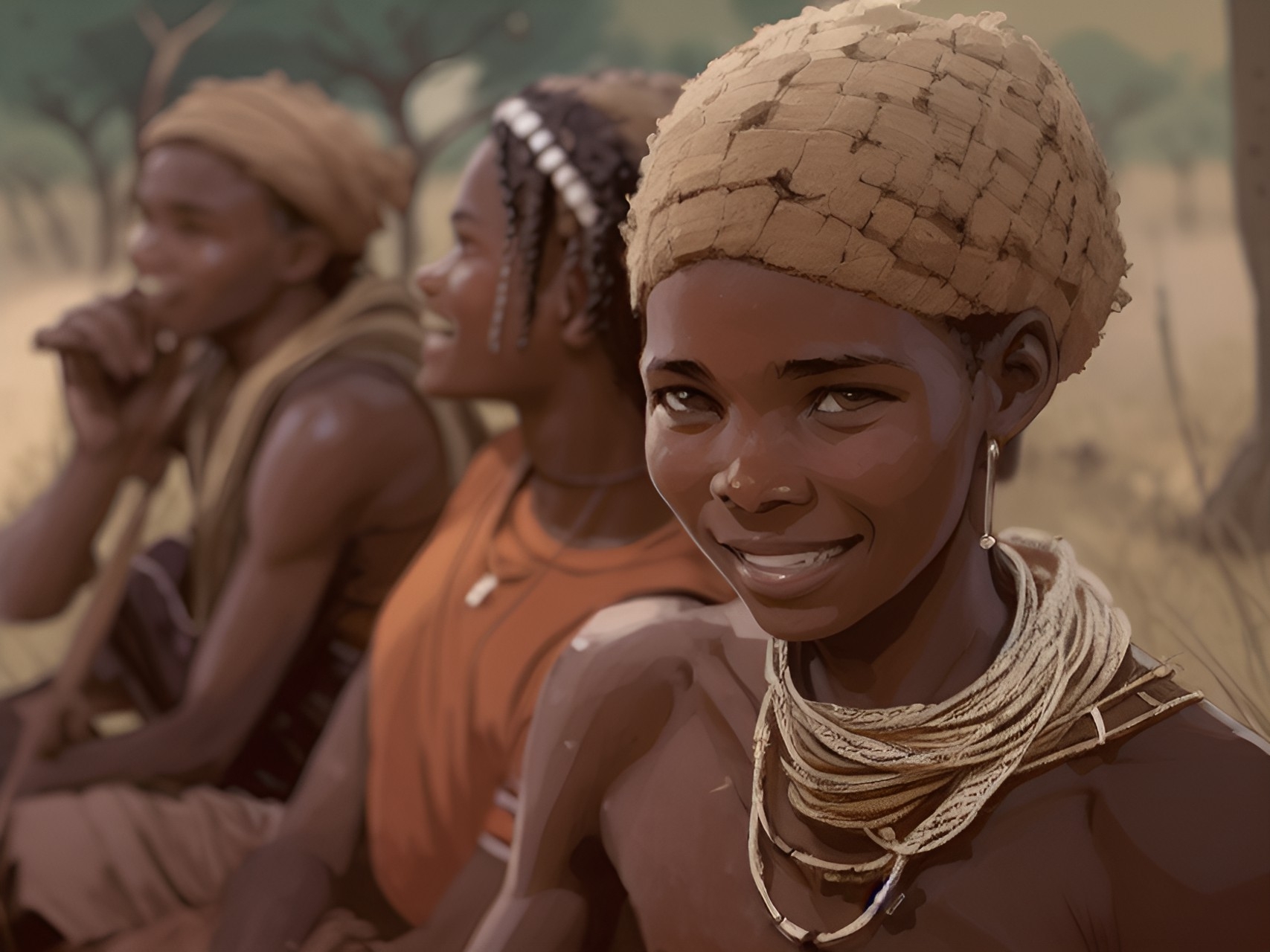
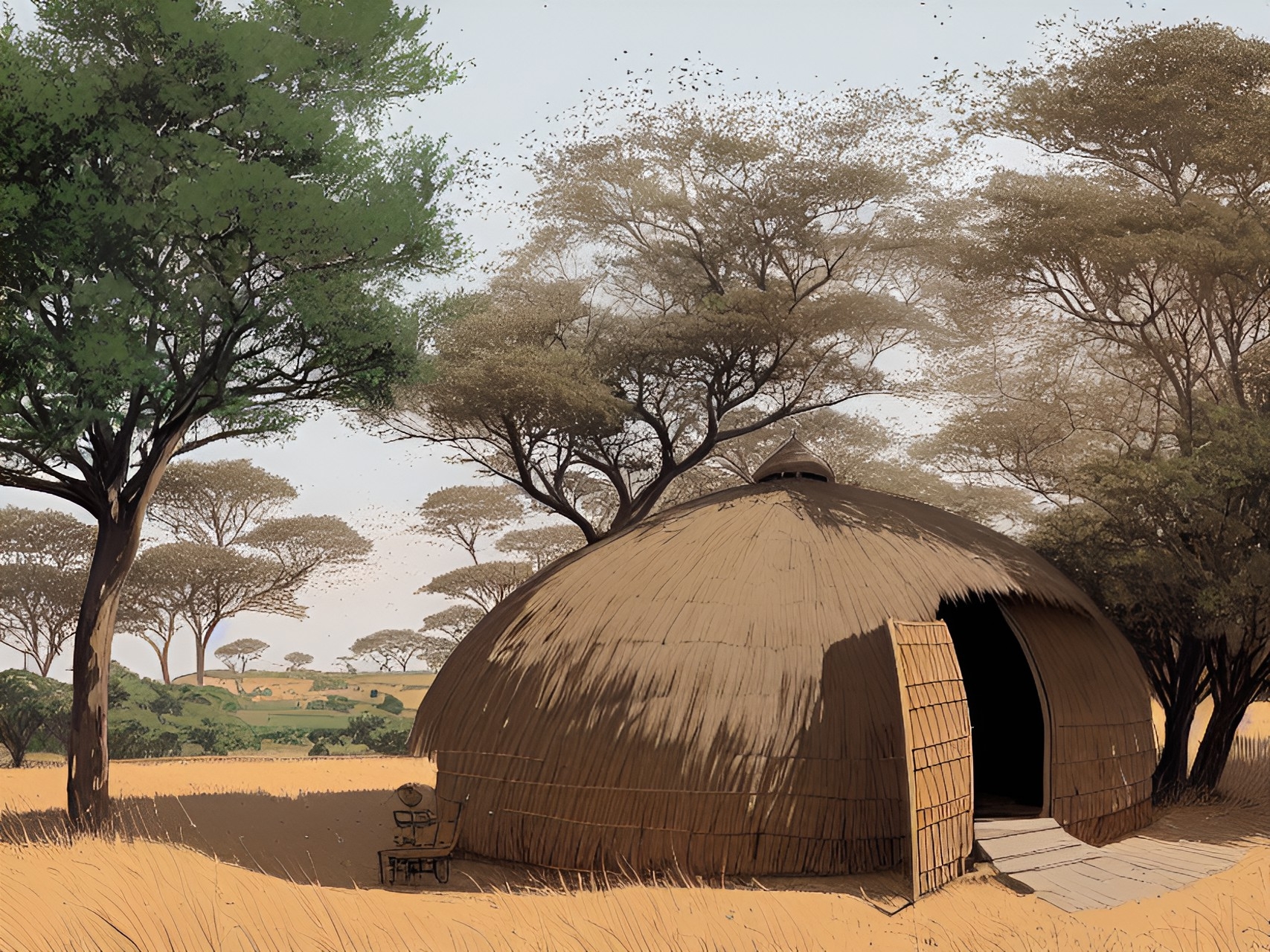
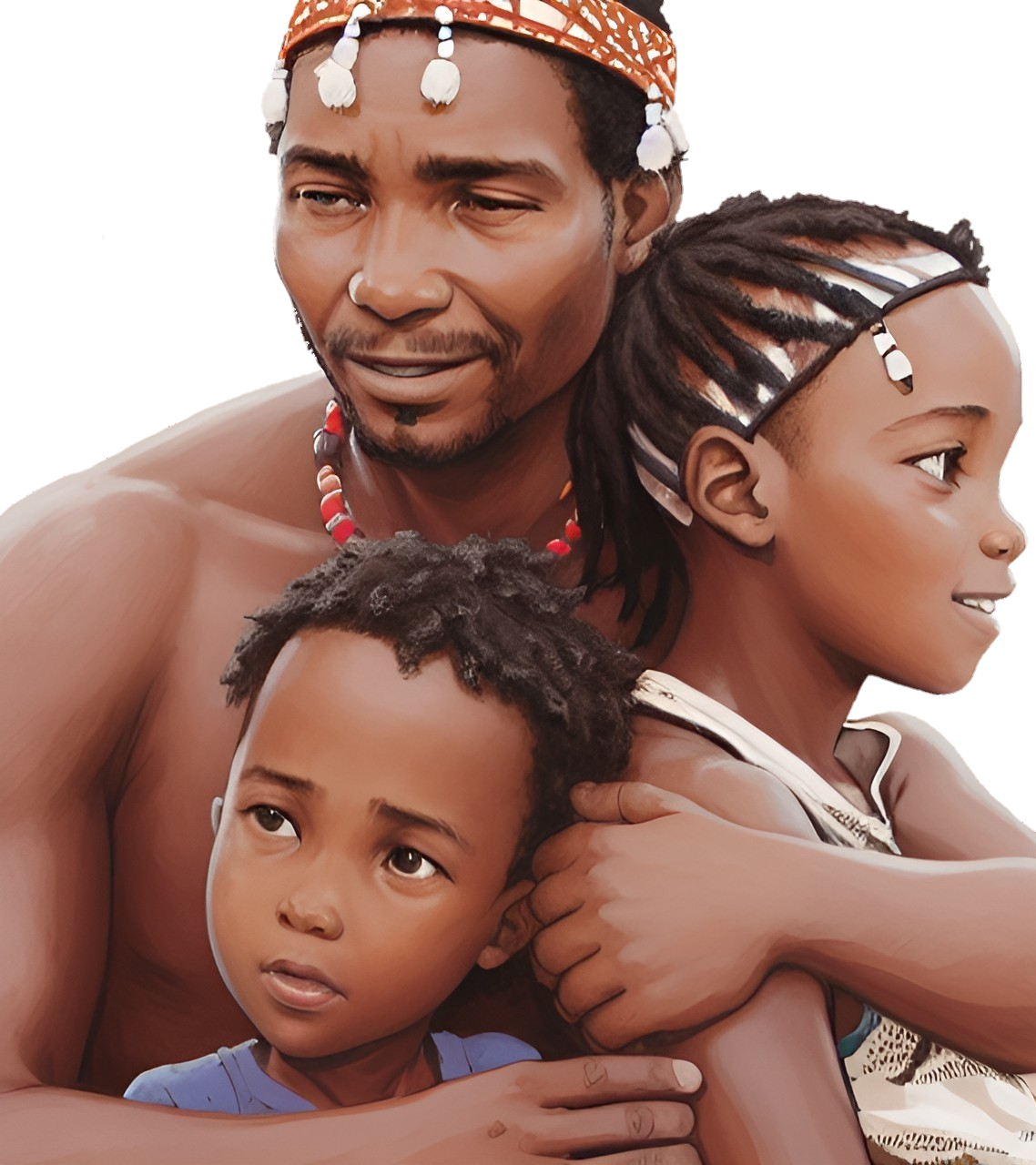
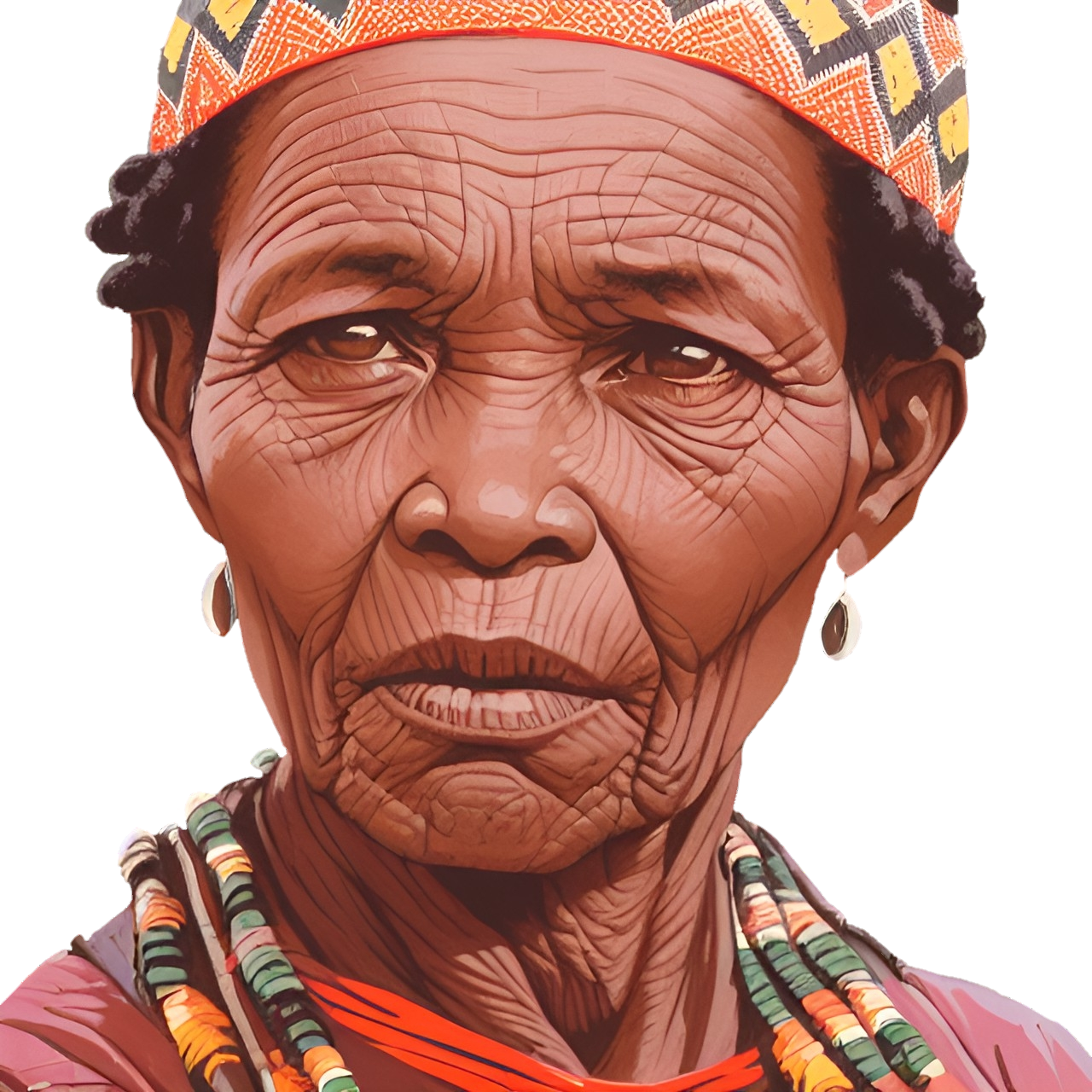
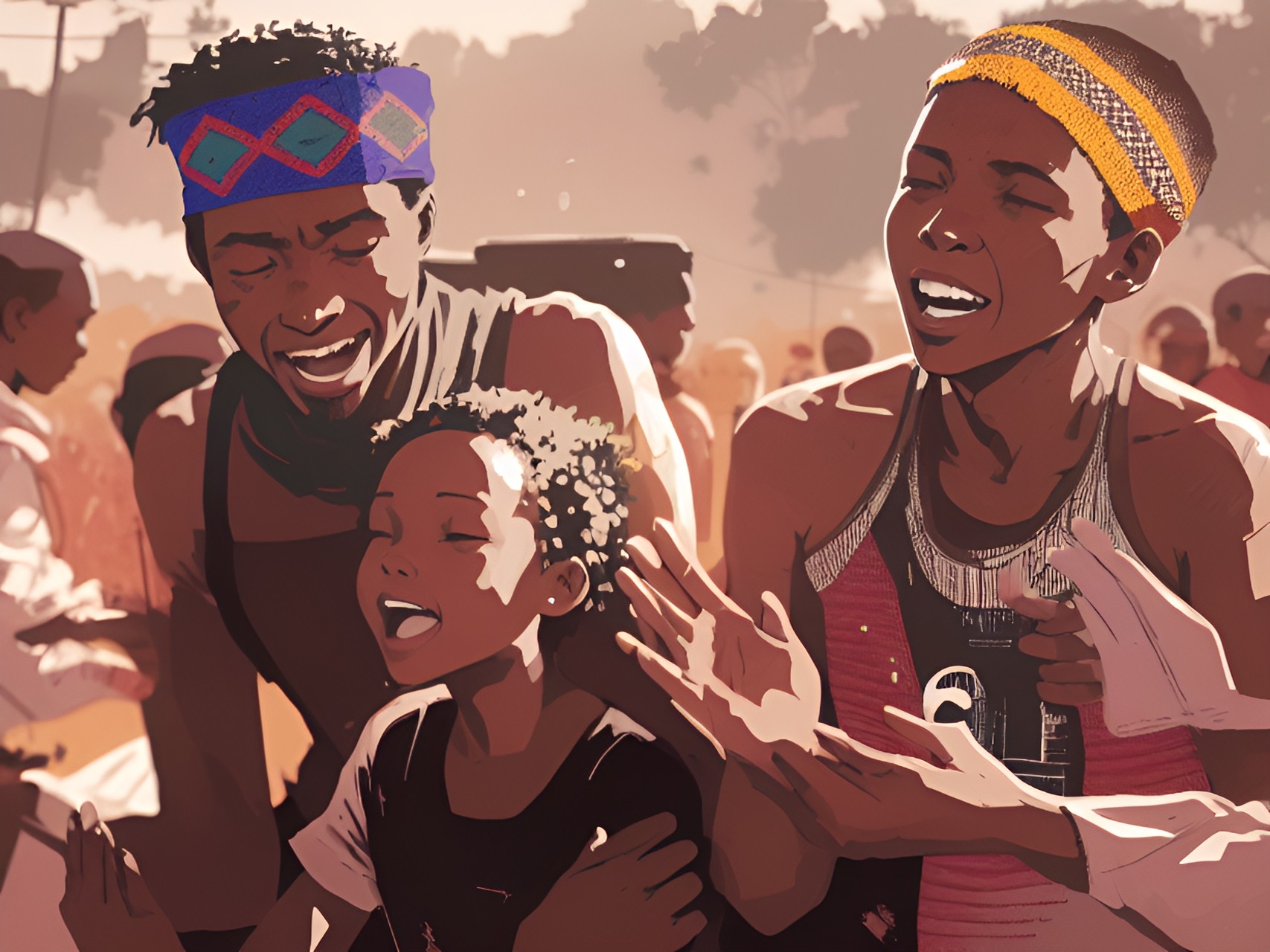










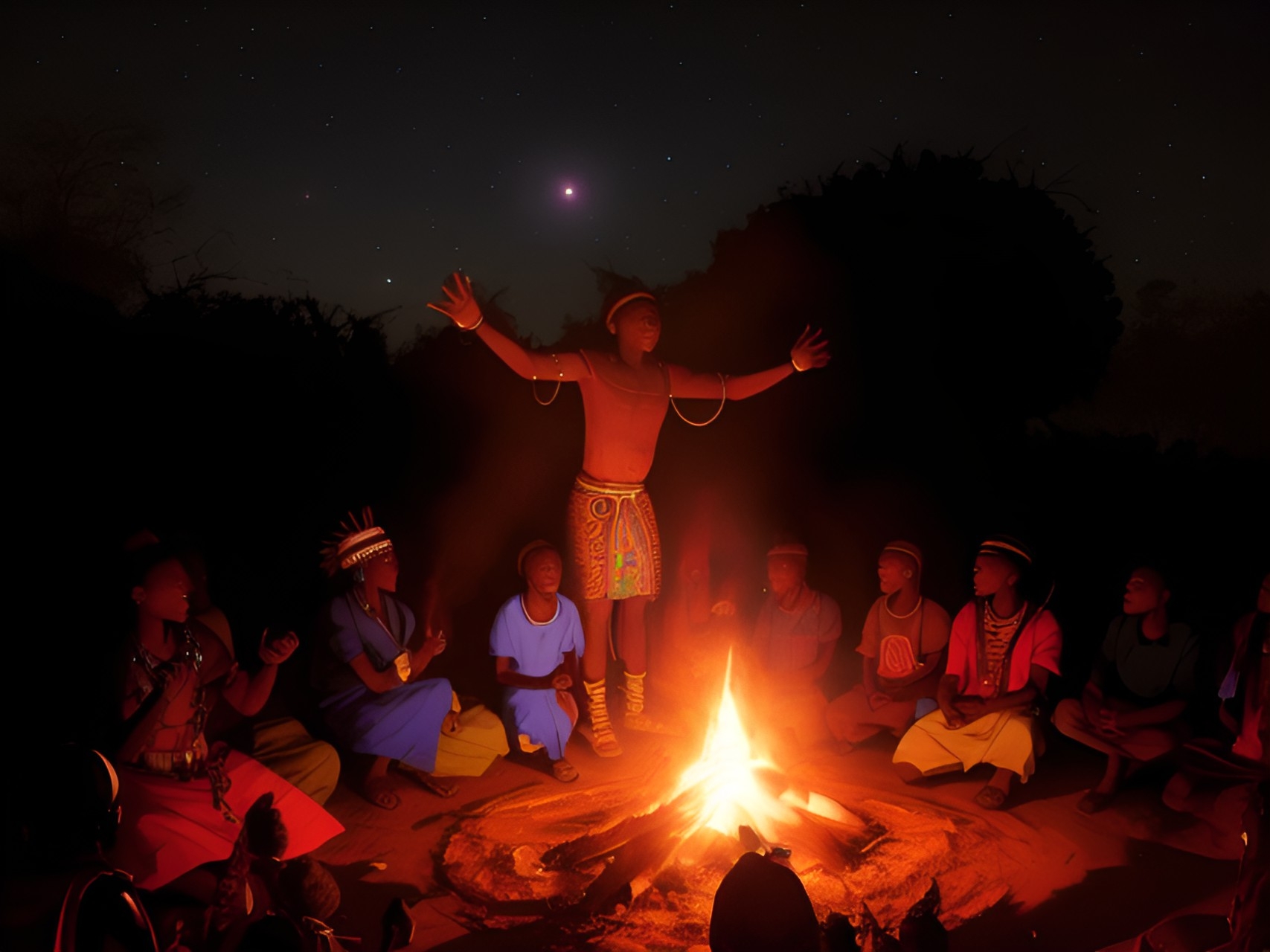
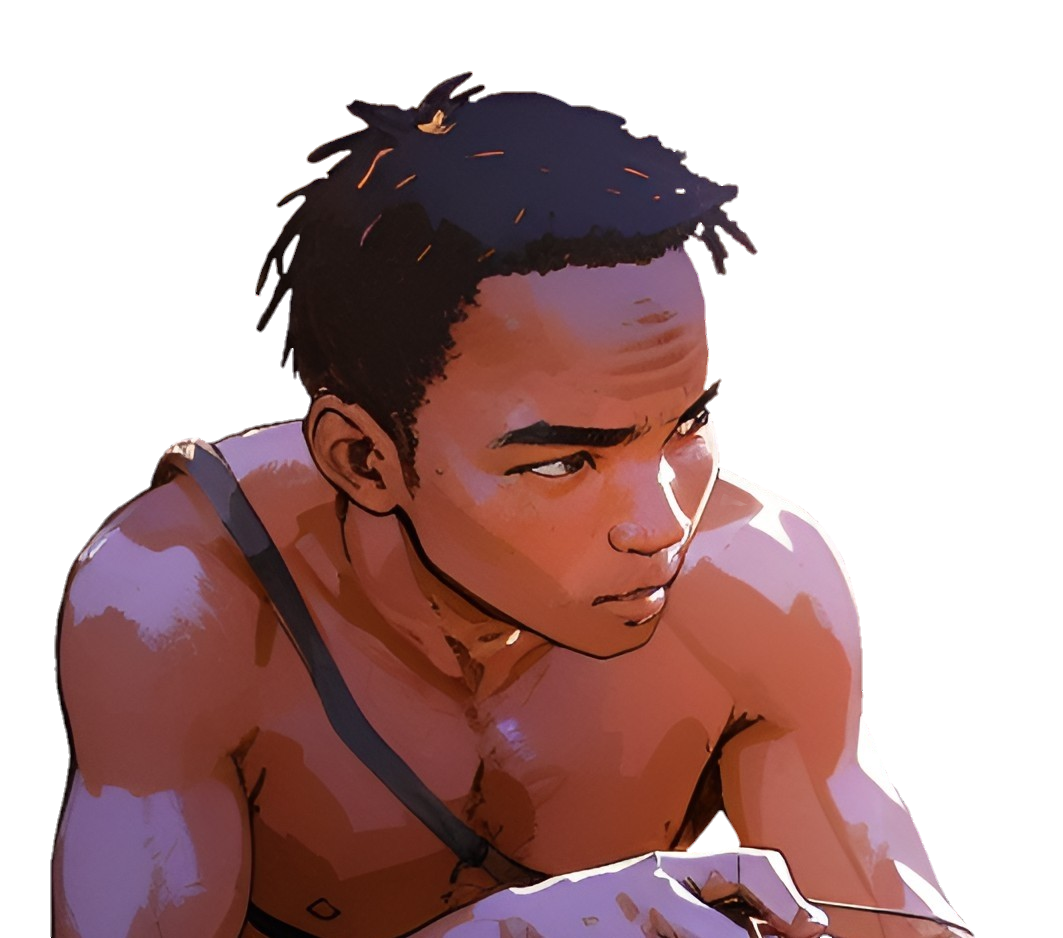
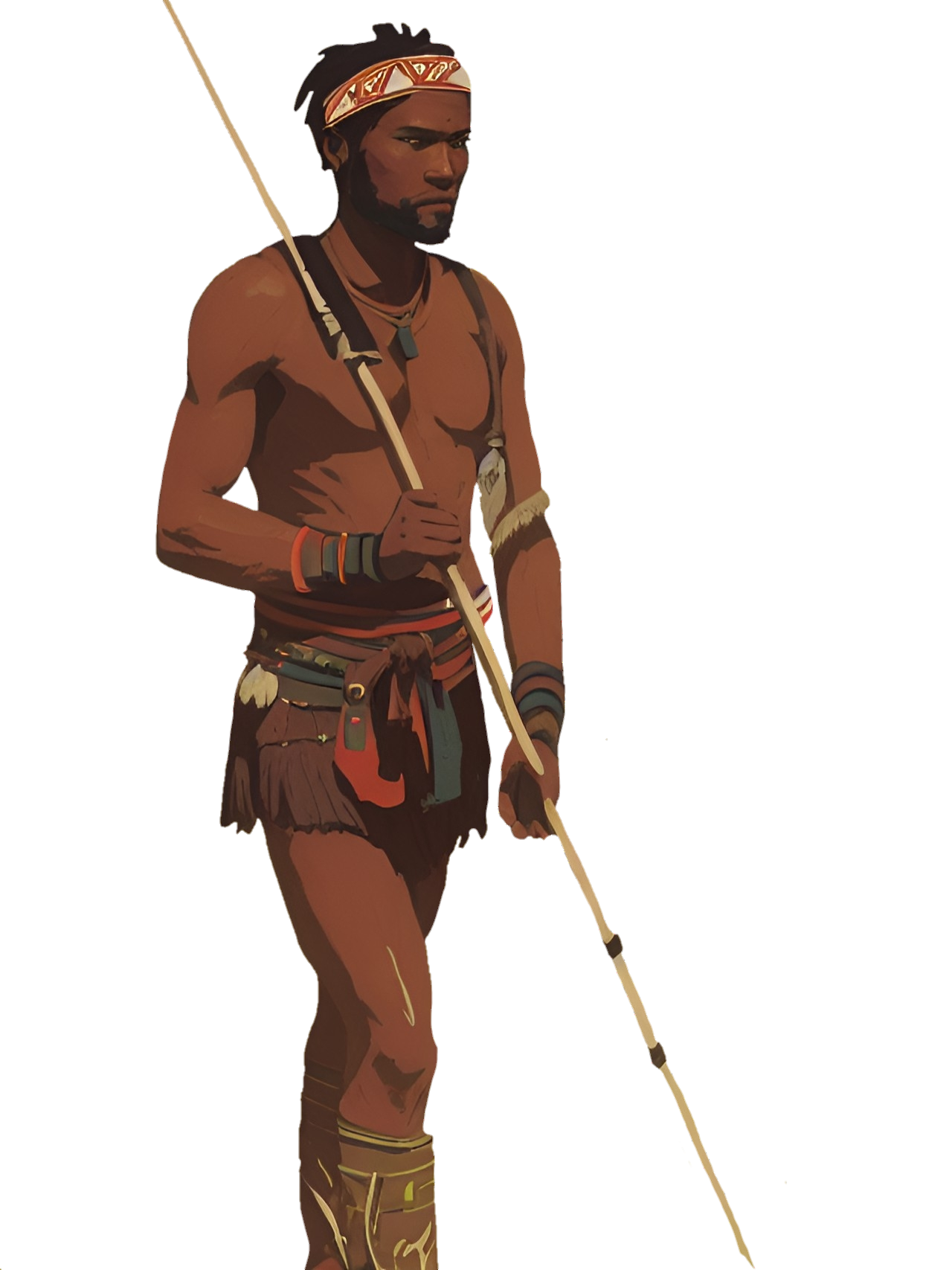
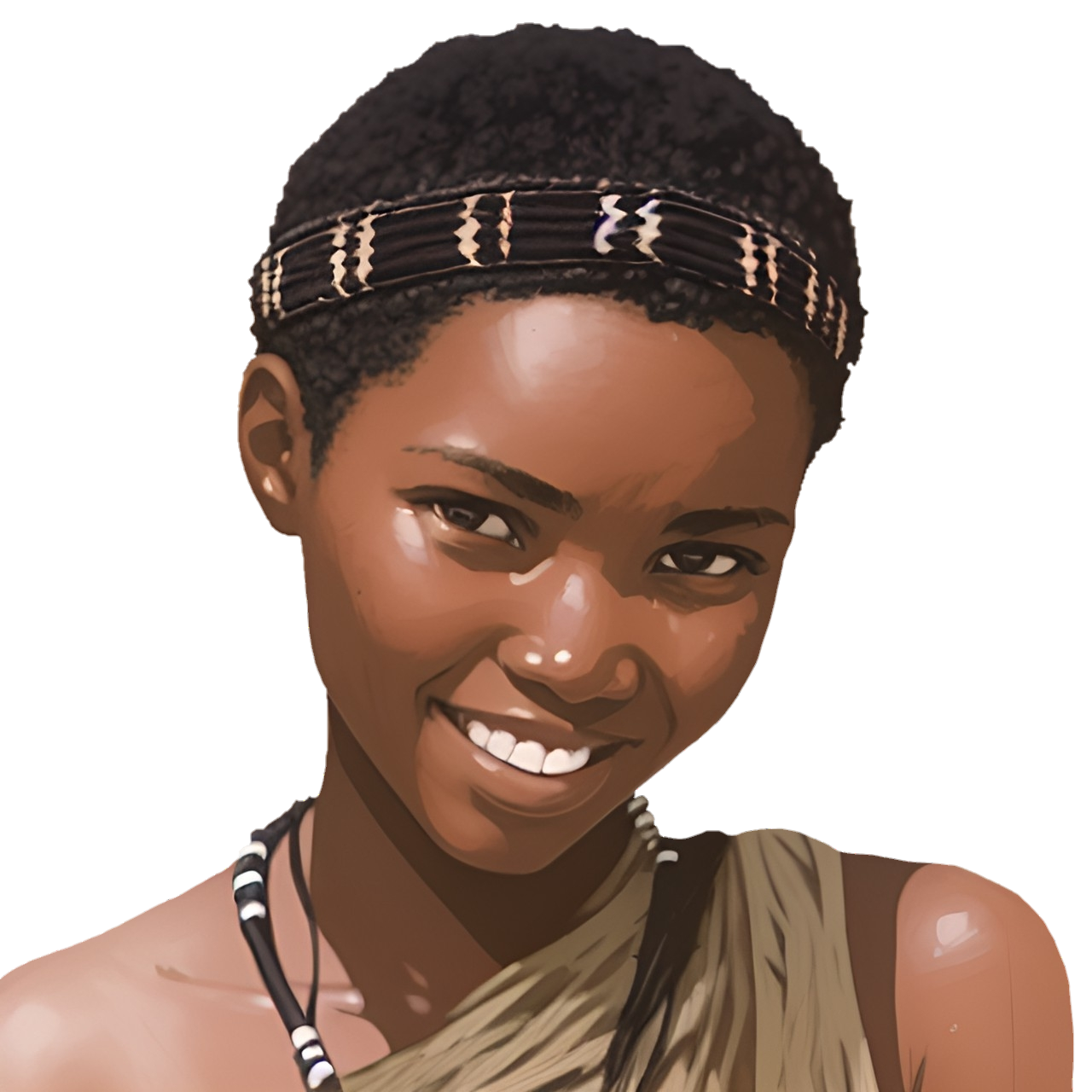
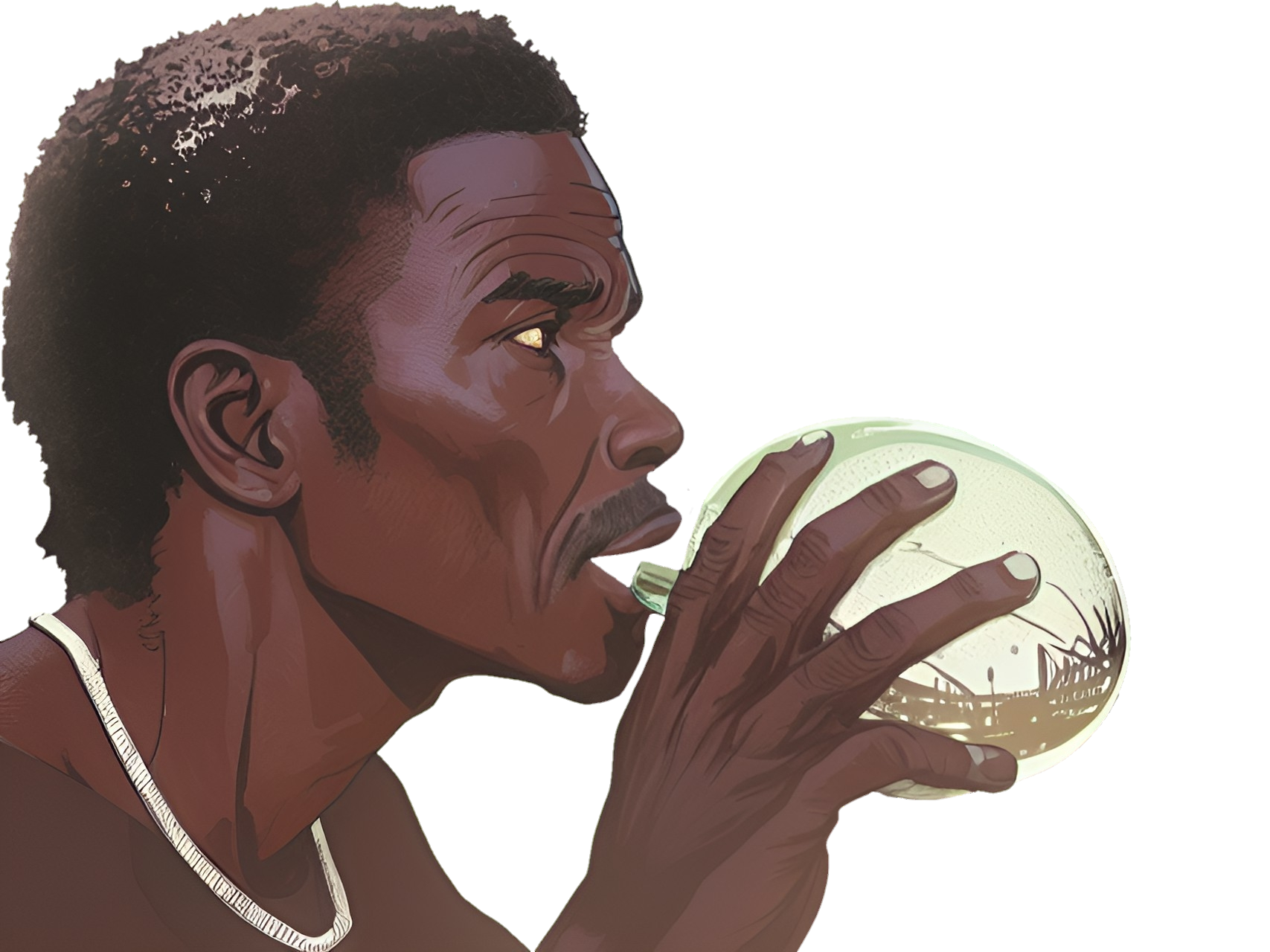
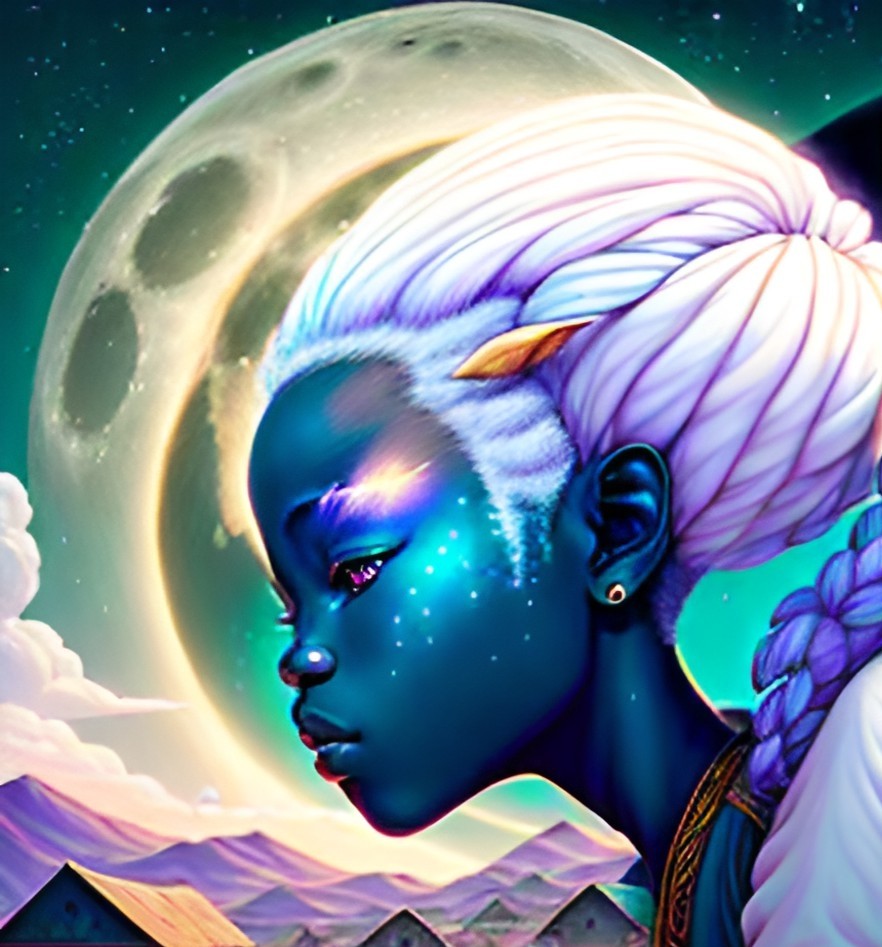
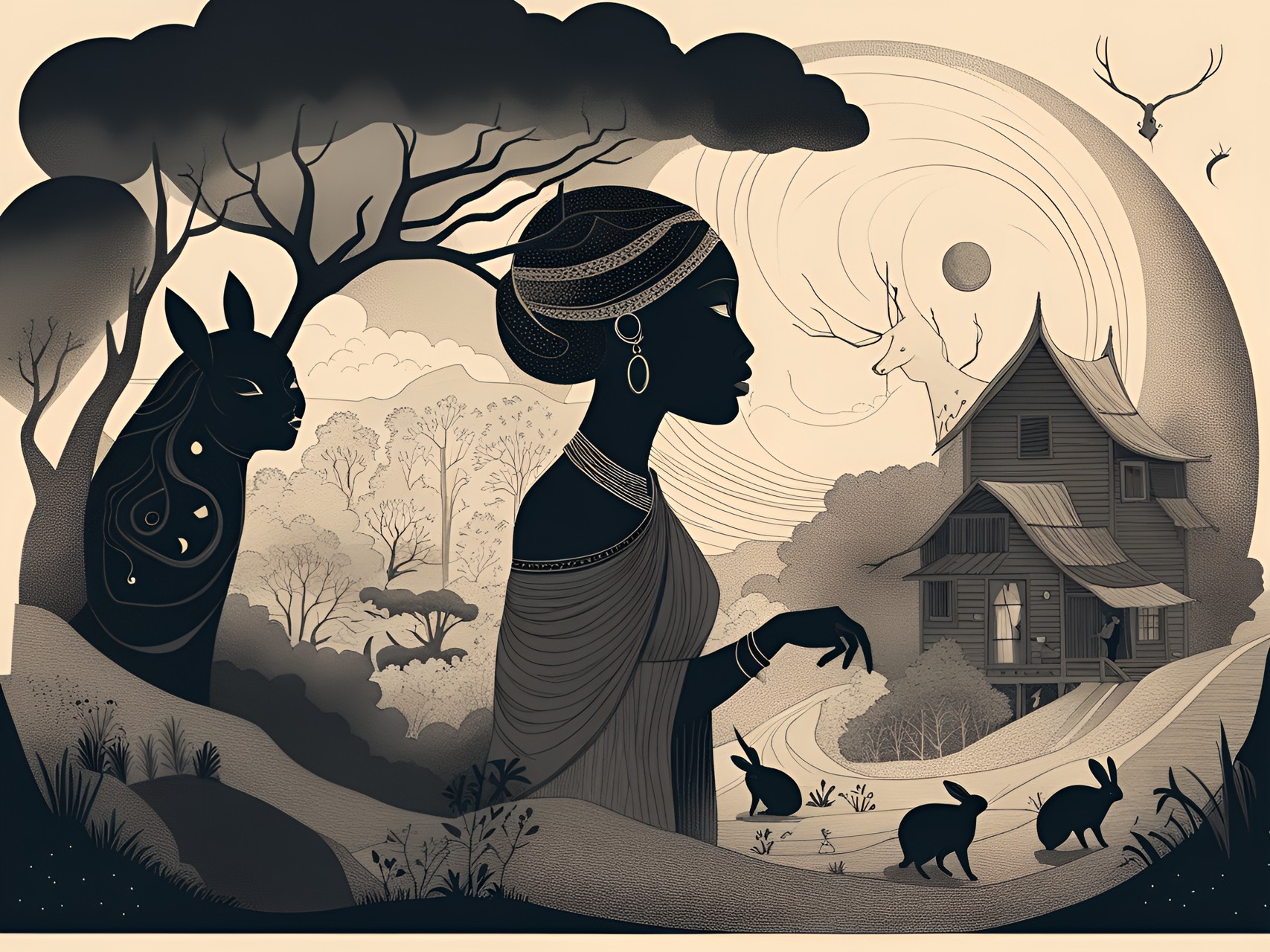
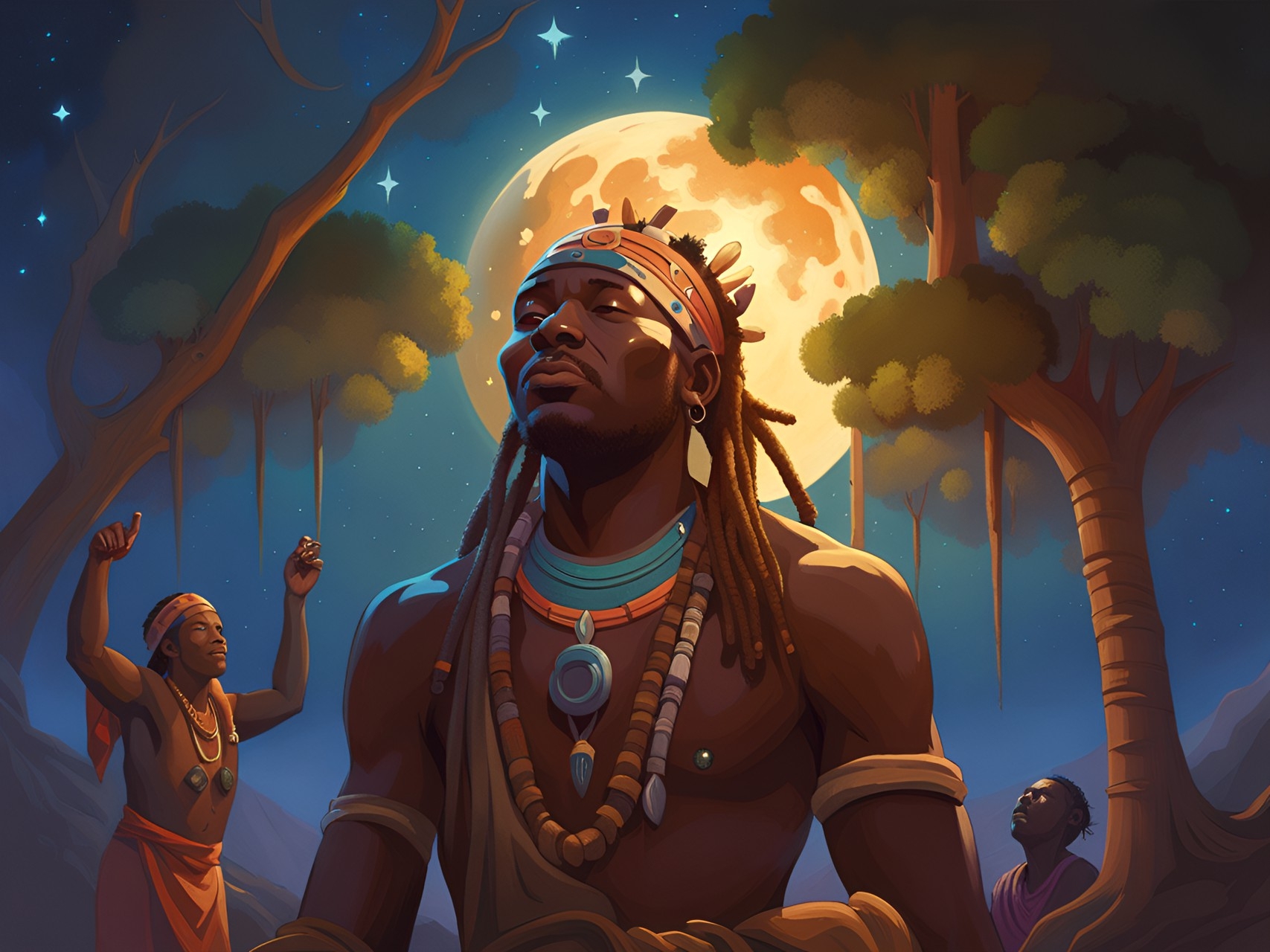
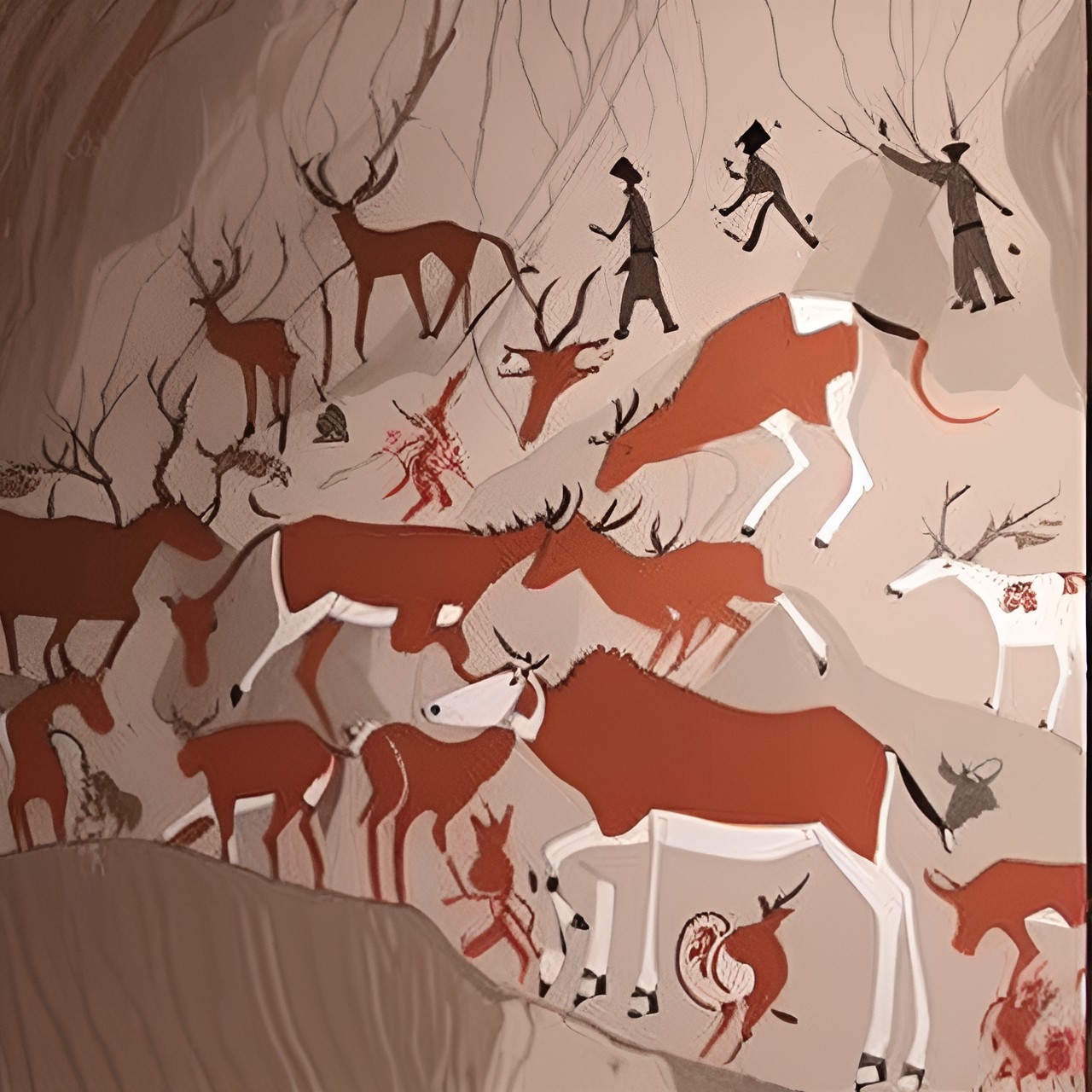


Comments
Author's Notes
This was originally posted as a general article for summer camp. This article is the improved version, converted over to an ethnicity template. You can still see the original here: Saan. Thank you for reading!